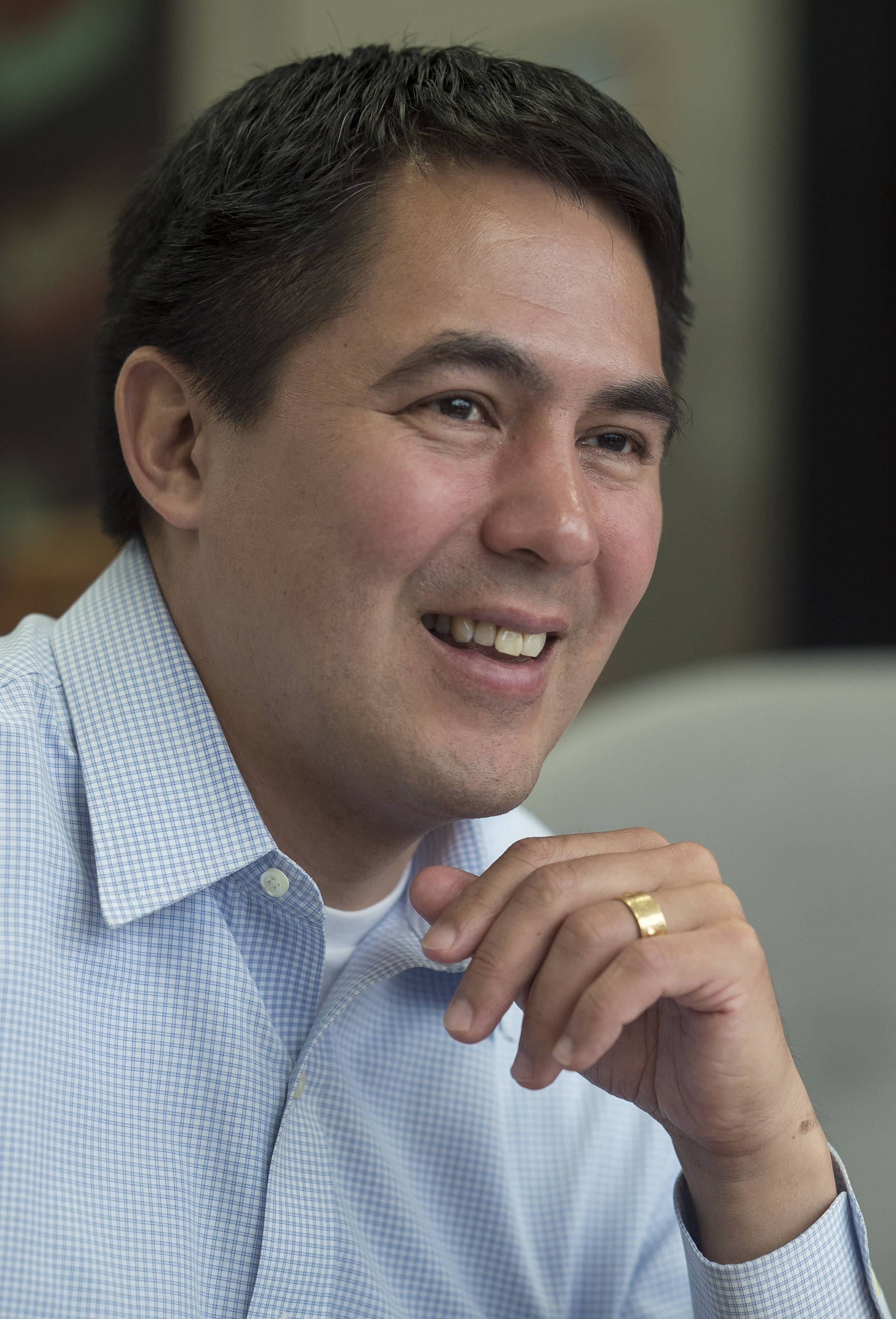Sealaska CEO Anthony Mallott was feeling a little under the weather on Wednesday, but even then, he didn’t keep himself from smiling.
For the first time since 2003, Southeast Alaska’s Native corporation is making money on its own.
In documents released to shareholders on Thursday and provided to the Empire in advance, the regional Alaska Native corporation reported net income of $43.3 million in 2017. The report marks a huge turnaround for the corporation, which lost $35 million in 2013 and hasn’t broken even on its own operations in a decade and a half.
“We’re excited. There’s more to come,” Mallott said. “We’ve spent the last five years saying this is what we’re going to do, so it’s exciting to show.”
Mallott pointed out that while the earnings are important, what the corporation does with those earnings is even moreso.
Sealaska has 22,000 shareholders, making it the largest of the 13 regional Native corporations in Alaska.
Since the start of the year, the corporation’s board of directors has authorized a $10 million deposit into the scholarship endowment for shareholders, and it announced a spring dividend of $23.1 million, more than twice the size of the $10.6 million dividend distributed last spring. (A second dividend is distributed in the fall.)
“We need to bring more of the success back home to our shareholders and our communities,” said board chairman Joe Nelson by phone from Anchorage.
“You have to tie financial success to increased shareholder benefits, because who cares if we’re high-fiving about a $43 million income year when the shareholders don’t feel it?” Mallott said. “This is the time to increase scholarships, to build a growing and sustainable dividend. It’s exciting to see what it means to our shareholders.”
The shift in Sealaska’s fortunes corresponds with a new five-year plan approved by the corporation’s board of directors in 2012. After a disastrous 2013 caused in part by a pair of failed projects in Hawaii, Sealaska made a big change. CEO Chris McNeil Jr. resigned, and Mallott, who had been serving as the corporation’s treasurer and corporate investment officer, became CEO in early 2014.
Talking Wednesday in a sunny conference room on the fourth floor of Sealaska Plaza, Mallott recalled a conversation he had in 2007 with Nelson, who was on the board but not yet chairman.
Mallott had just come back to Sealaska (his father, Alaska Lt. Gov. Byron Mallott, was the corporation’s CEO from 1982 to 1992) from a job with Bank of America in California.
“Joe started saying: Is plastics who Sealaska is?” Mallott recalled, referring to a plastics company owned by the corporation at the time.
“The clarity you have at a 2013 moment allows you to honestly answer that question,” Mallott said. “We had — one, too many businesses — and two, businesses that Sealaska wasn’t.”
As soon as Mallott became CEO, he began championing the idea that the corporation should divest itself of its far-flung subsidiaries and focus on a few key industries with ties to Southeast Alaska.
The notion had already been endorsed by the board, and Mallott ran with it.
“The thought was: If we’re falling on our face, then at least we’re making our best effort at home,” Mallott said.
Sealaska’s revenue now comes from four main areas: Natural resources (principally timber), services (mainly government contracting), food (Seattle-based seafood companies) and investments.
Sealaska also earns money from real estate and some other minor sources, including a stake in an as-yet-unbuilt casino in California. (Mallott said the corporation is trying to unload that stake.)
According to the annual audited financial statement required by ANCSA, Sealaska earned more money in 2017 than 2016 in all four sectors.
The “foods” sector of Sealaska’s portfolio, which didn’t exist before 2016, is now its biggest component. With $124.4 million in revenue (and net income of about $750,000), it’s larger than timber, which has been a Sealaska mainstay since the corporation was founded.
“The largest platform we have was not in full existence last year,” Mallott said.
The corporation’s 2017 performance was also boosted by exceptional investment returns, and the corporation is forecasting more modest performance in coming years.
As for timber, the company has other ideas in the works. Last month, the corporation announced it had been certified by California to participate in that state’s carbon-credit program.
Under that program, polluters must limit their greenhouse gas emissions or find ways to offset their impact on the environment. Leaving trees uncut is one such way, and Sealaska may soon begin to make money by pledging to leave trees alone, as long as California’s polluters pay up.
Mallott said that program is still somewhat speculative, and it isn’t included in the corporation’s projected revenue.
He and Nelson each said that while they’re happy to celebrate success, Sealaska’s mission is about continued progress for all of its shareholders. To that end, the corporation is planning additional job training programs and other efforts to ensure shareholders are executives as well as employees.
“We’re celebrating a moment in time, but we are also at the same time embracing the challenges we have in front of us,” Nelson said.
• Contact reporter James Brooks at jbrooks@juneauempire.com or 523-2258.

